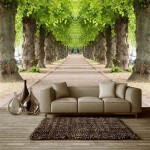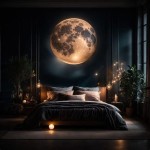Brick Wall Living Room Decor: A Comprehensive Guide
The exposed brick wall, a coveted architectural feature, adds texture, character, and a touch of urban sophistication to any living room. Integrating this raw element into a cohesive interior design requires a thoughtful approach, balancing its rustic appeal with modern comfort and functionality. This article explores various strategies for effectively decorating a living room featuring a brick wall, focusing on color palettes, furniture selection, lighting, and accent pieces that complement and enhance this unique focal point.
Understanding the Brick Wall's Character
Before embarking on any decorating project, it is crucial to assess the existing brick wall. Different brick types, colors, and finishes present varying aesthetic considerations. A deep red brick will evoke a warmer, more traditional feel, while a whitewashed brick wall offers a brighter, more contemporary look. The brick's texture also plays a significant role. A heavily textured brick wall adds depth and visual interest, whereas a smoother brick surface creates a more refined appearance.
The architectural style of the brick wall should also inform decorating choices. A perfectly aligned, uniform brick wall might suit a minimalist or industrial interior, while a more irregular, distressed brick wall lends itself to a bohemian or vintage-inspired aesthetic. Understanding the wall's inherent character allows for informed decisions regarding color palettes, furniture styles, and accent pieces that will effectively complement its unique qualities.
Moreover, consider the condition of the brick. If the brick is crumbling or damaged, repairs or sealing might be necessary before decorating. Addressing any structural issues will not only improve the wall's appearance but also prevent further deterioration and ensure the longevity of the design.
Selecting a Complementary Color Palette
The color palette for a brick wall living room should harmonize with the inherent tones of the brick. Neutral colors such as white, gray, and beige serve as excellent backdrops, allowing the brick wall to remain the focal point. These neutral shades create a sense of balance and prevent the room from feeling overwhelmed by the brick's texture and color. Incorporating lighter shades of these neutrals can brighten the room, particularly if the brick is dark or heavily textured.
Conversely, bolder colors can be used to create contrast and drama. Deep blues, greens, or even shades of terracotta can complement the brick's warmth and add a touch of sophistication. However, it is essential to use these colors sparingly, perhaps as accent walls or in smaller decorative elements, to avoid creating a feeling of visual clutter.
When choosing colors, consider the undertones of the brick. Red brick often pairs well with earthy tones and warm neutrals, while gray brick can be complemented by cooler grays, blues, and greens. Testing paint swatches against the brick wall is crucial to ensure the chosen colors harmonize effectively with the brick's specific hue and texture. Natural light also influences color perception, so assessing color compatibility under different lighting conditions is advisable.
Furniture Selection and Arrangement
The selection of furniture for a brick wall living room should prioritize comfort, functionality, and aesthetic compatibility with the brick's character. Consider the size and scale of the furniture in relation to the room's dimensions and the brick wall's prominence. Overly large furniture can overwhelm the space, while furniture that is too small can look insignificant against the backdrop of the brick wall.
Leather furniture often pairs well with brick walls, adding a touch of rustic elegance and complementing the brick's texture. Upholstered pieces in neutral tones or complementary colors can also create a harmonious balance. Consider incorporating furniture with clean lines and simple silhouettes to avoid competing with the brick's visual complexity. Mid-century modern furniture, with its emphasis on natural materials and understated design, can also be an excellent choice.
The arrangement of furniture is equally important. Avoid placing furniture directly against the brick wall, as this can obscure its texture and impact. Instead, leave some space between the furniture and the wall to allow the brick to breathe and maintain its visual prominence. Consider creating a focal point with the furniture arrangement, such as a seating area centered around a coffee table or a fireplace. Orienting furniture towards the brick wall can also highlight its presence and create a sense of visual cohesion.
Incorporate natural materials like wood and metal in the furniture selection. A wooden coffee table or a metal side table can complement the brick's rustic appeal and add warmth to the space. Introducing plants as part of the furniture arrangement can soften the overall look and create a more inviting atmosphere.
Lighting Strategies for Brick Wall Living Rooms
Proper lighting is essential for enhancing the beauty and character of a brick wall. The texture and color of brick can absorb light, so it is important to strategically incorporate various lighting sources to illuminate the space effectively. A combination of ambient, task, and accent lighting can create a well-lit and inviting living room.
Ambient lighting, such as recessed lighting or a chandelier, provides overall illumination for the room. Task lighting, such as floor lamps or table lamps, provides focused light for reading or other activities. Accent lighting, such as spotlights or wall sconces, highlights specific features of the brick wall, creating depth and visual interest.
Positioning accent lights to graze the brick wall's surface can emphasize its texture and create dramatic shadows. Uplighting, which directs light upwards towards the ceiling, can also create a sense of spaciousness and illuminate the brick from below. Consider using warm-toned light bulbs to enhance the brick's natural warmth. LED bulbs, which are energy-efficient and long-lasting, are an excellent choice for brick wall living rooms.
Dimmer switches allow for adjusting the lighting levels to create different moods and atmospheres. Dimming the lights in the evening can create a cozy and intimate setting, while brighter lighting can be used for daytime activities. Experimenting with different lighting techniques can help to maximize the brick wall's visual impact and create a well-lit and inviting living room.
Accenting the Brick Wall with Decorative Elements
Decorative elements, such as artwork, mirrors, and textiles, can enhance the character of a brick wall and add personality to the living room. When selecting accent pieces, consider the scale, color, and style of the brick wall and the overall aesthetic of the room.
Artwork is an effective way to add color and visual interest to a brick wall. Large-scale pieces can create a dramatic focal point, while smaller pieces can be arranged in a gallery wall to add texture and depth. When choosing artwork, consider the color palette of the room and select pieces that complement the brick's tones. Abstract art, with its emphasis on color and texture, can be an excellent choice for a brick wall living room.
Mirrors can enhance the sense of space and light in a brick wall living room. A large mirror placed opposite a window can reflect natural light and brighten the room. Mirrors can also be used to create a sense of depth and visual interest. Consider incorporating a decorative mirror with an interesting frame to add a touch of elegance to the space.
Textiles, such as throw blankets, pillows, and rugs, can add warmth and texture to a brick wall living room. Choose fabrics with interesting patterns and textures to complement the brick's visual complexity. Natural fibers, such as wool and cotton, can add a touch of rustic elegance to the space. Consider incorporating throw pillows in complementary colors to tie the room together and create a cohesive aesthetic.
Plants bring life and vibrancy to a brick wall living room. Greenery softens the hard edges of the brick and adds a touch of nature to the space. Consider placing potted plants on shelves or windowsills to create a green oasis. Hanging plants can also add visual interest and texture to the brick wall.
Shelving units offer both functional storage and display space for decorative items. Open shelving can showcase books, plants, and other personal belongings, adding personality and character to the room. Metal or wooden shelving units can complement the brick's rustic appeal and provide a visual contrast to the wall's texture.
By carefully selecting and arranging decorative elements, homeowners can enhance the beauty and character of a brick wall and create a living room that is both stylish and inviting.

Pin On Interior Designing

60 Stunning Modern Living Room Ideas Photos Brick Wall Feature

100 Brick Wall Living Rooms That Inspire Your Design Creativity Decoist

7 Stunning Exposed Brick Wall Decor Ideas Designcafe

10 Brick Wall Design Ideas To Show You The Beauty Of Interiors

77 Cool Living Rooms With Brick Walls Digsdigs

Ideas To Give An Elite Touch Your Brick Wall Design Living Room

Tips For Designing With Interior Brick Walls The Seattle Times

100 Brick Wall Living Rooms That Inspire Your Design Creativity Decoist

7 Ways To Update Your Interior Exposed Brick Wall







